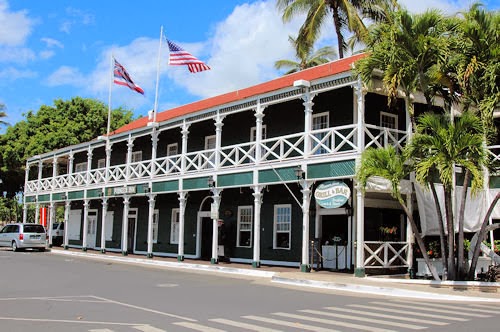In 1922, an imaginative shipping clerk at the Delaware & Hudson freight station in Wilkes-Barre (Pennsylvania) decided to take an old straw hat and send it on a trip of its very own to see how far it could go. (Luzerne County Historical Society)
(It was not a completely original idea; word of a traveling hat was found in a North Carolina newspaper from 1908. However, this Hobo Hat was the first to travel around the world.)
Patrick Fagan started the Hobo Hat send off for the Pacific Coast on September 5, 1922, as a way to advertise the good shipping and handling service of the freight line.
Fifty post cards were attached, along with a note asking those freight agents who received the hat to send back a card telling of its travels, and to please keep the hat going.
Mr. Fagan received postcards from Massachusetts, Chicago, and California, before receiving word that the hat was going to be traveling to the Orient via Hawaii, thanks to some friendly staff at the Matson Navigation Company freight office across the country.
In March 1923, Mr. Fagan received a post card from freight agents at Yokohama, Japan telling of the arrival of the hat in good condition, and that it was being sent next to Hong Kong.
The hat also traveled to West Australia, Java in the Dutch Indies, South Africa, and Brazil, before coming back to Hawaii after two years.
By this point, “Mr. Hobo Hat” was a famous world traveler and was traveling aboard the ships of the Dollar Steamship line. (Luzerne County Historical Society)
“The famous ‘Hobo Hat’ sent on a trip around the world by Patrick Fagan, employee of the Delaware & Hudson freight station, in September 1923, and which is now making its third tour of the globe, was las heard of at Honolulu.”
“Mr Fagan yesterday received a card from MW Mitchell, agent of the Dollar Steamship line, to the effect that the hat had arrived at Honolulu on the SS Garfield February 21 and was presented to the Hon. Wallace R Farrington, governor of the Territory of Hawaii at the executive building.”
“The fame of the hat had probably reached the territory before the hat itself and legislative business was suspended in the Senate and the House of Representatives, temporarily in order that the ‘world tourist’ might be viewed before it started again on the journey.”
“Mr Mitchell said that the hat was decorated and left with the Aloha of Hawaii (the best of luck0 on board the SS President Garfield which departed for Japan on the same day.”
“The owners of the Dollar Steamship Line has a specially made hat box prepared for the hat. It is a leather case on which has printed’ Mr Hobo Hat’ in large letters and with the words ‘Round the World’ at the bottom.”
“The ‘Hobo Hat,’ an old straw lid, the property of Patrick Fagan of this city, was started on its first trip around the world three years ago for the D&H station yards in this city and is now on its third tour of the world.” (Wilkes-Barre Record (Pennsylvania, March 23, 1925)
“On the last lap of his third trip around the world. ‘Mr. Hobo Hat’ accompanied by ‘Uncle Joe’ Fordney, former chairman of the House ways and means committee, has landed in this country and is en route to the Capital to pay his respects at the White House to the President.”
“This hobo hat is a battered straw ‘lid’ that started on its wanderings from Wilkes-Barre, Pa., on September 12, 1922. It went first to New York, thence across the continent to the Pacific coast, next to the Orient. It traveled on the steamers President Adams and President Hayes, and its last voyage was on the President Garfield, traveling ‘de luxe’ with a special ticket personally indorsed by Capt. Robert Dollar, president of the Dollar Steamship Co.”
“Mr. Hobo Hat wears many tags in token and testimony of his around the globe voyaging, which now aggregate more than 100,000 miles. In each country and in many important cities, Mr. Hobo Hat has called upon the most prominent persons in political and social life.” (The Sunday Star (DC), May 10, 1925)
When Hobo Hat finally returned home after all his travels, he was displayed in the window of MacWilliam’s Store in Wilkes-Barre in June 1925 to coincide with Poppy Day for the American Legion, which raised money for the wounded veterans of World War I and their families.
After that, the Hobo Hat was in 1935 when he came to the Wyoming Historical and Geological Society (for Wyoming Valley, PA; now the Luzerne County Historical Society) to be displayed, along with his “entourage” of hat box, autographed ticket, postcards, luggage tags and photographs, and ended up staying to become a permanent part of the collection (donated in 1959 by Patrick Fagan).
In addition to various foreign dignitaries, President Calvin Coolidge’s name is among the now-faded signatures to be found on the ticket, testifying to the widespread popularity that Mr. Hobo Hat once enjoyed. (Luzerne County Historical Society)






























